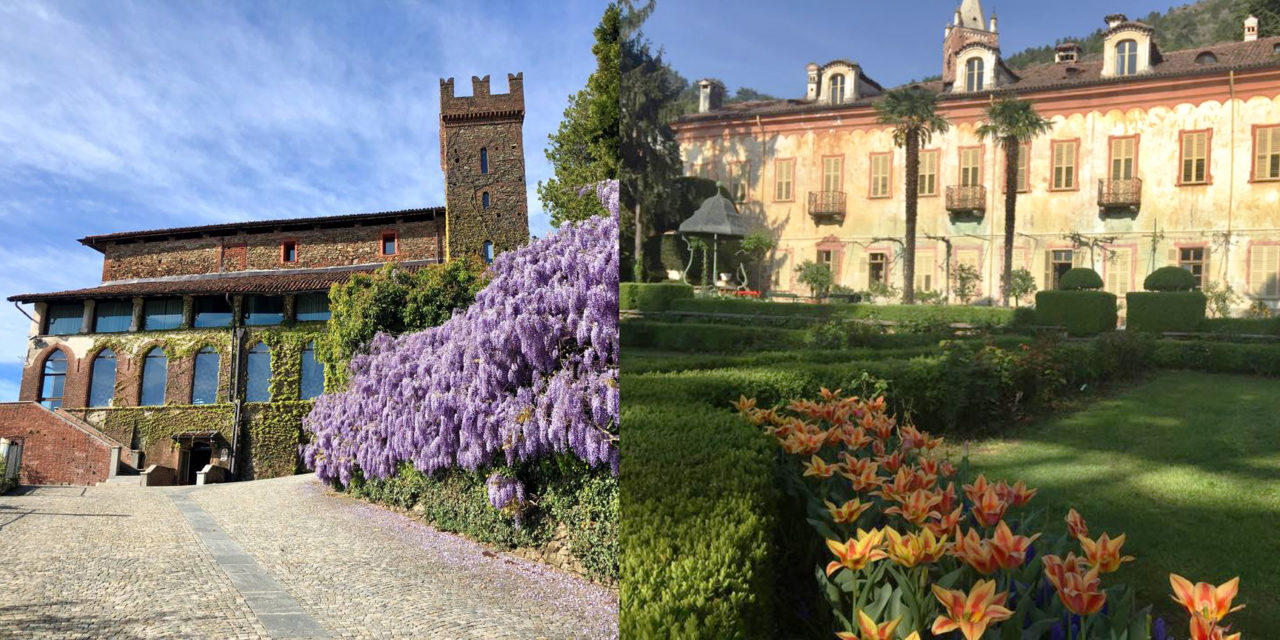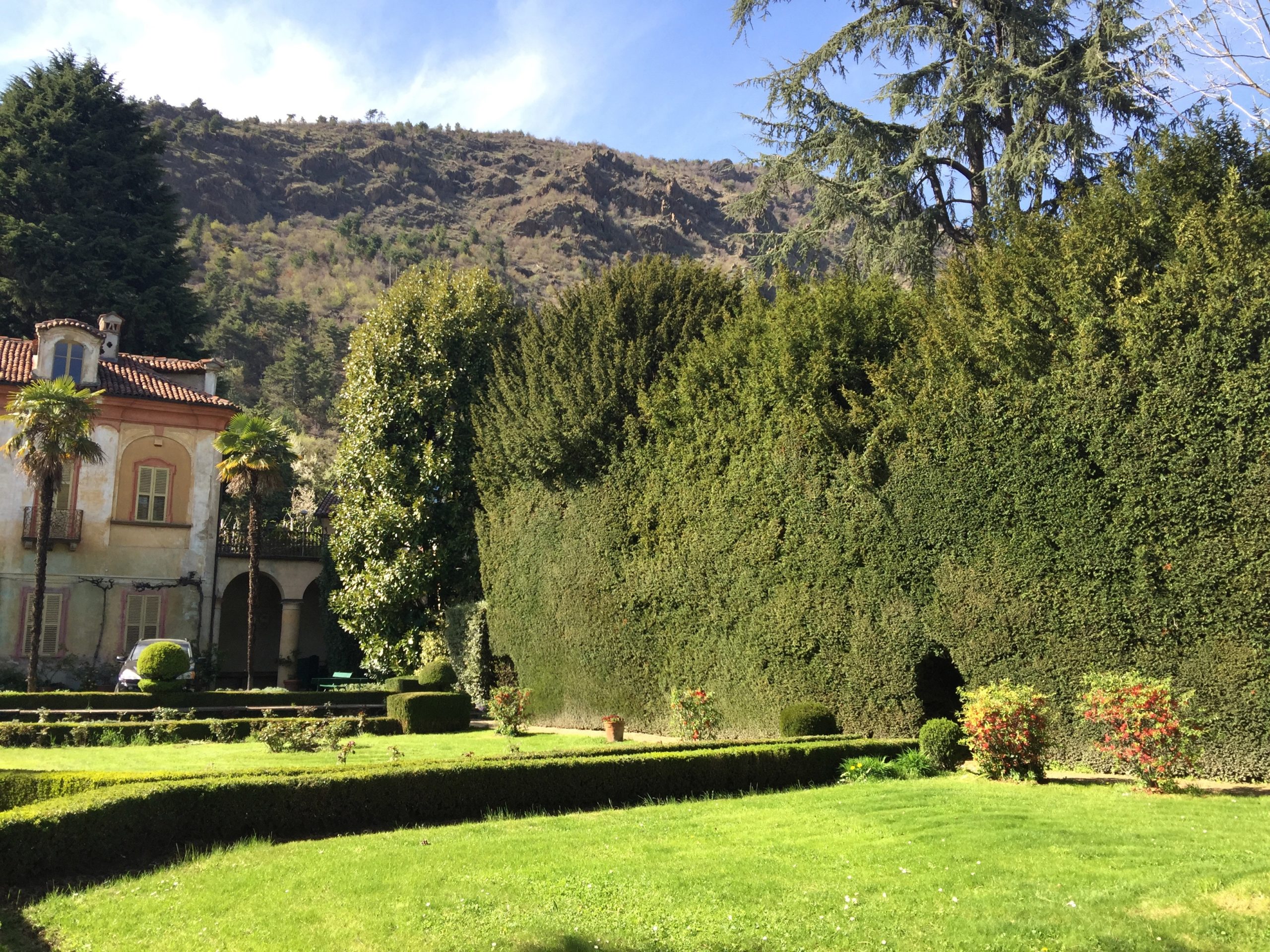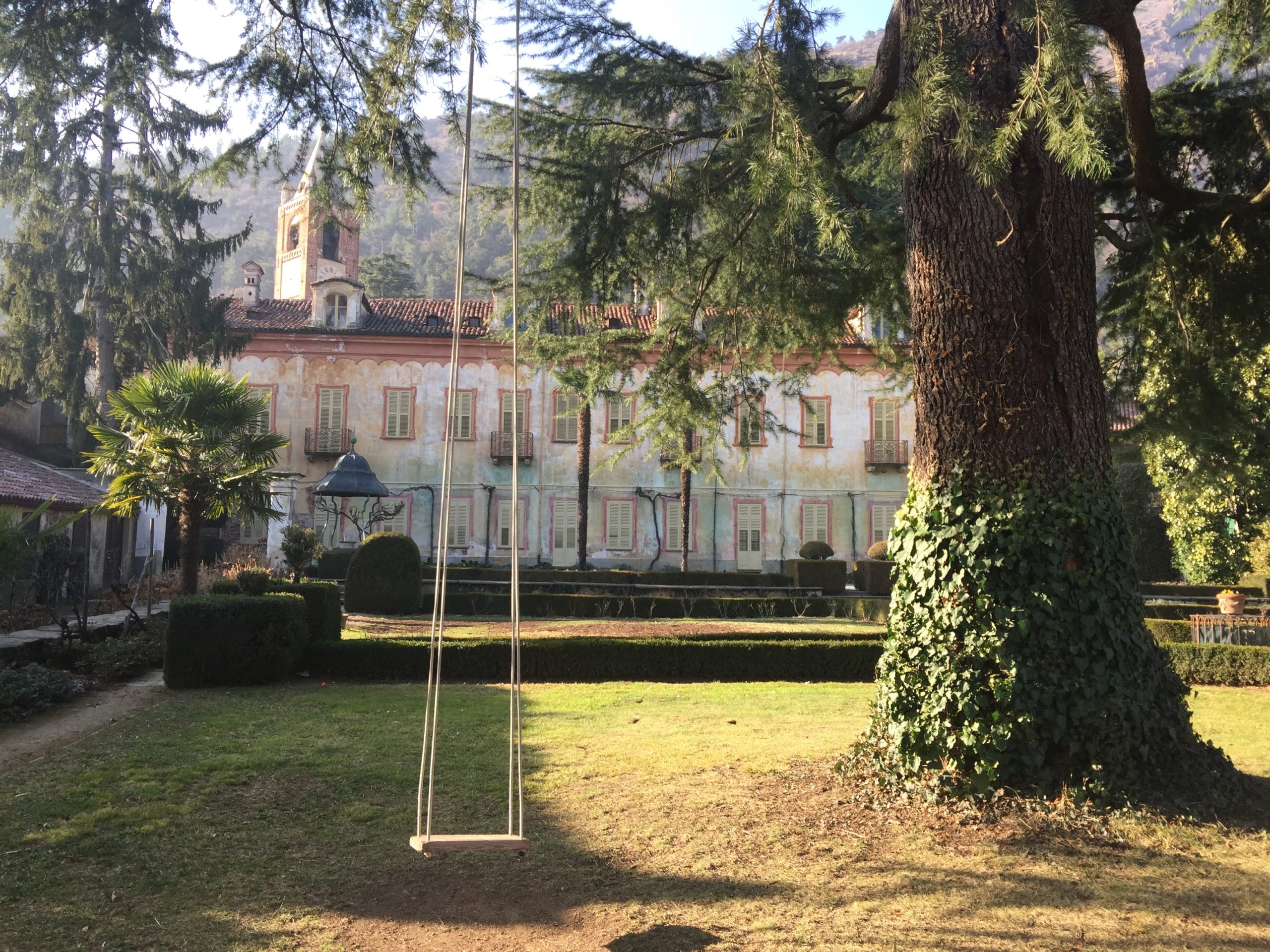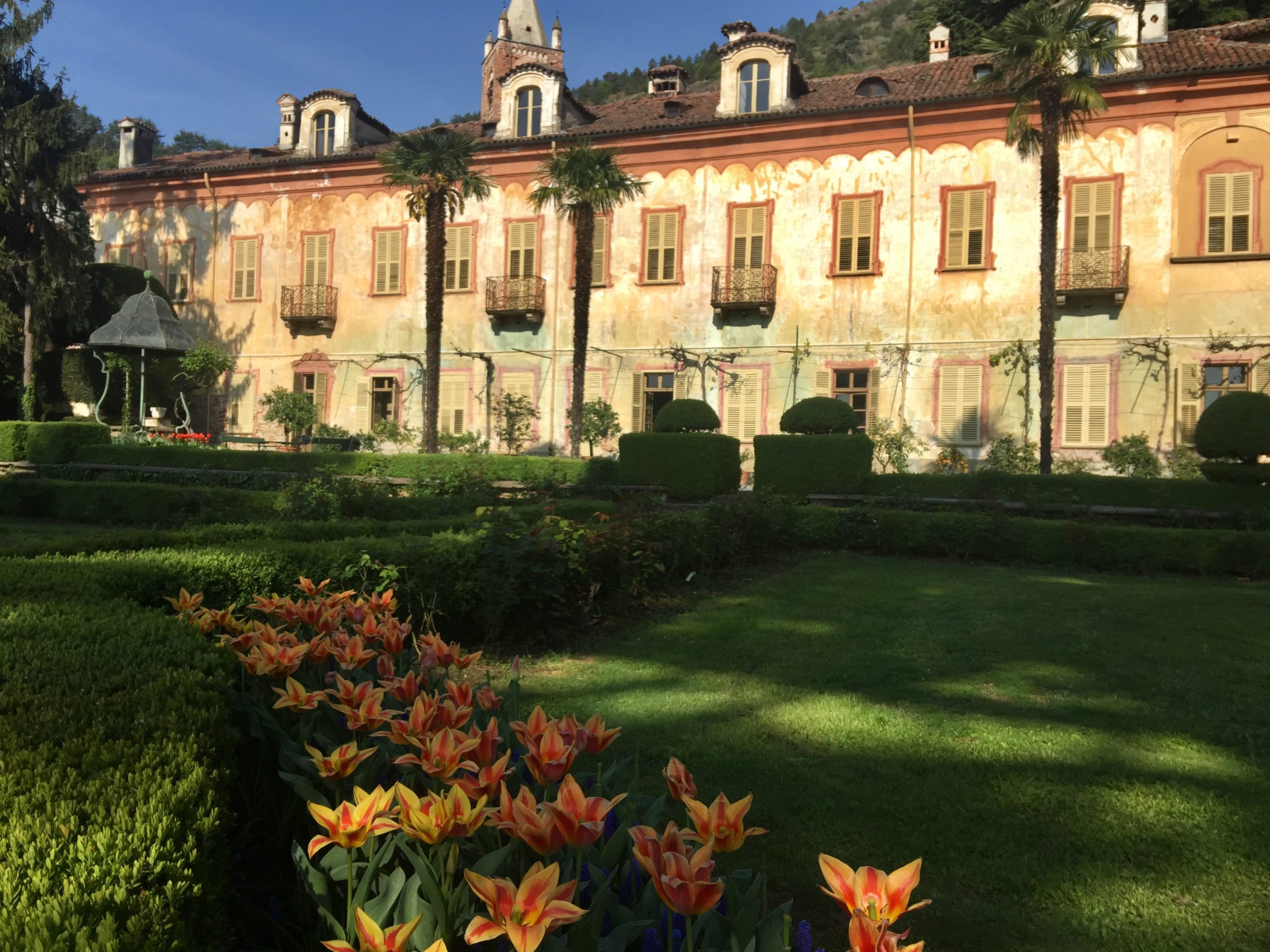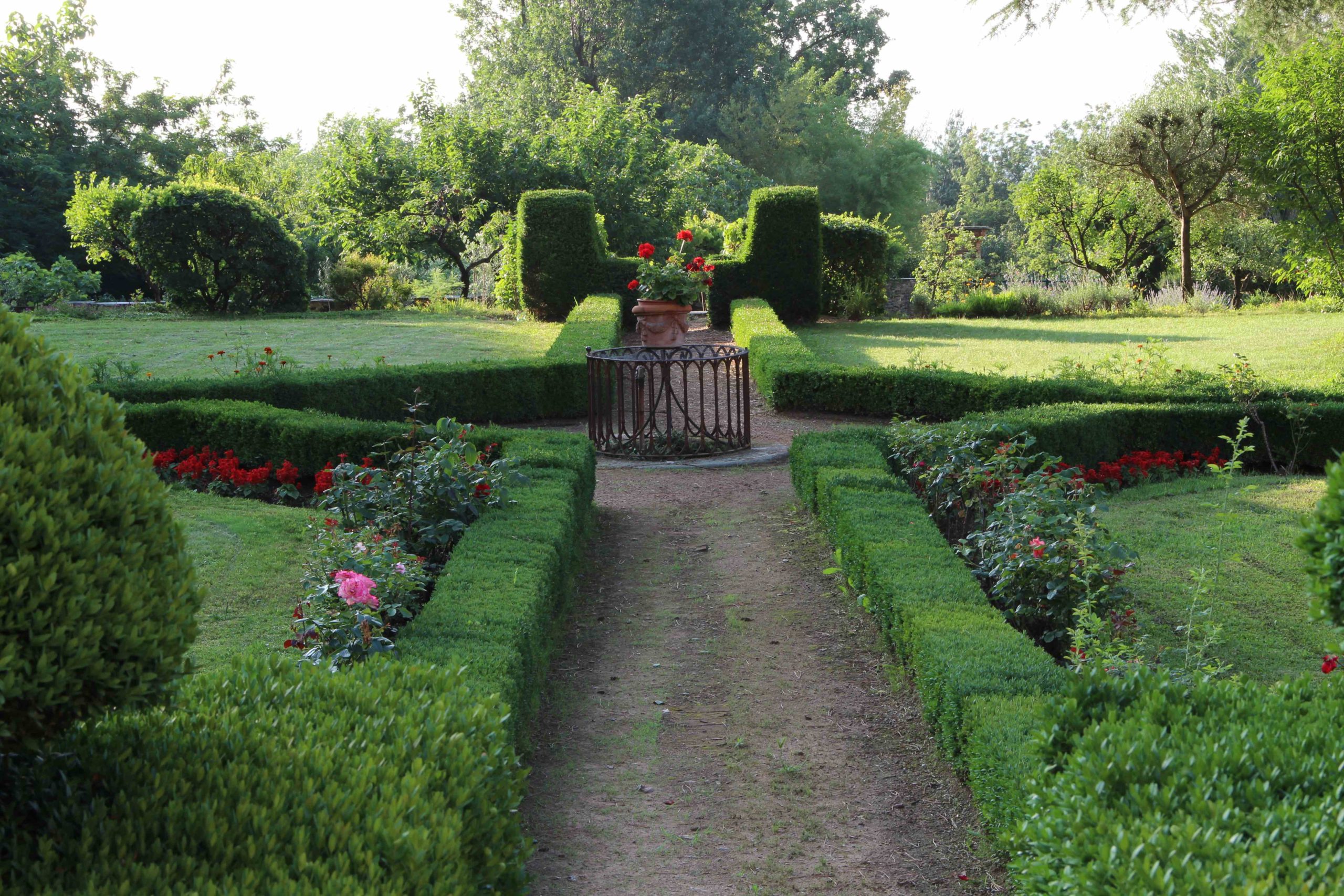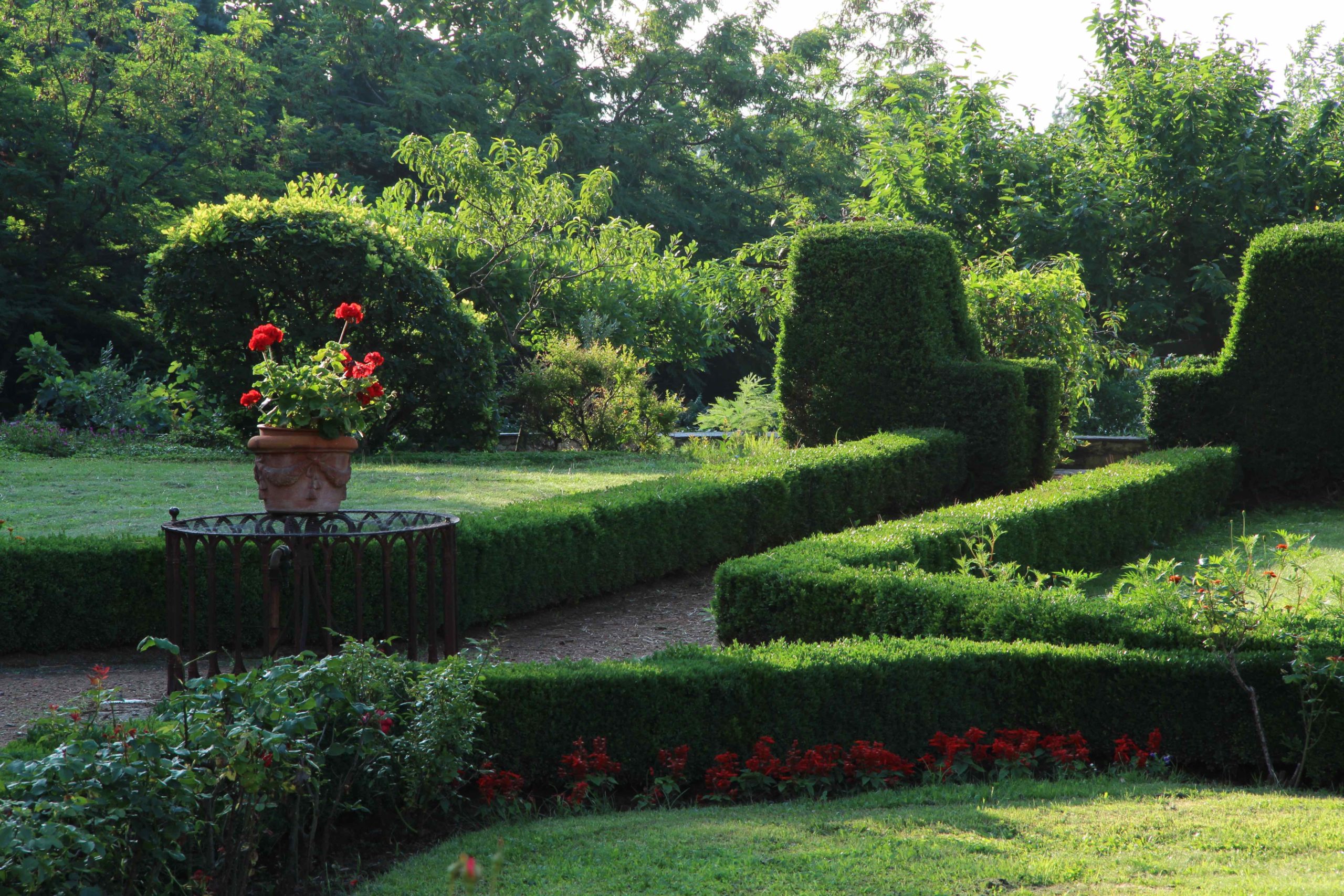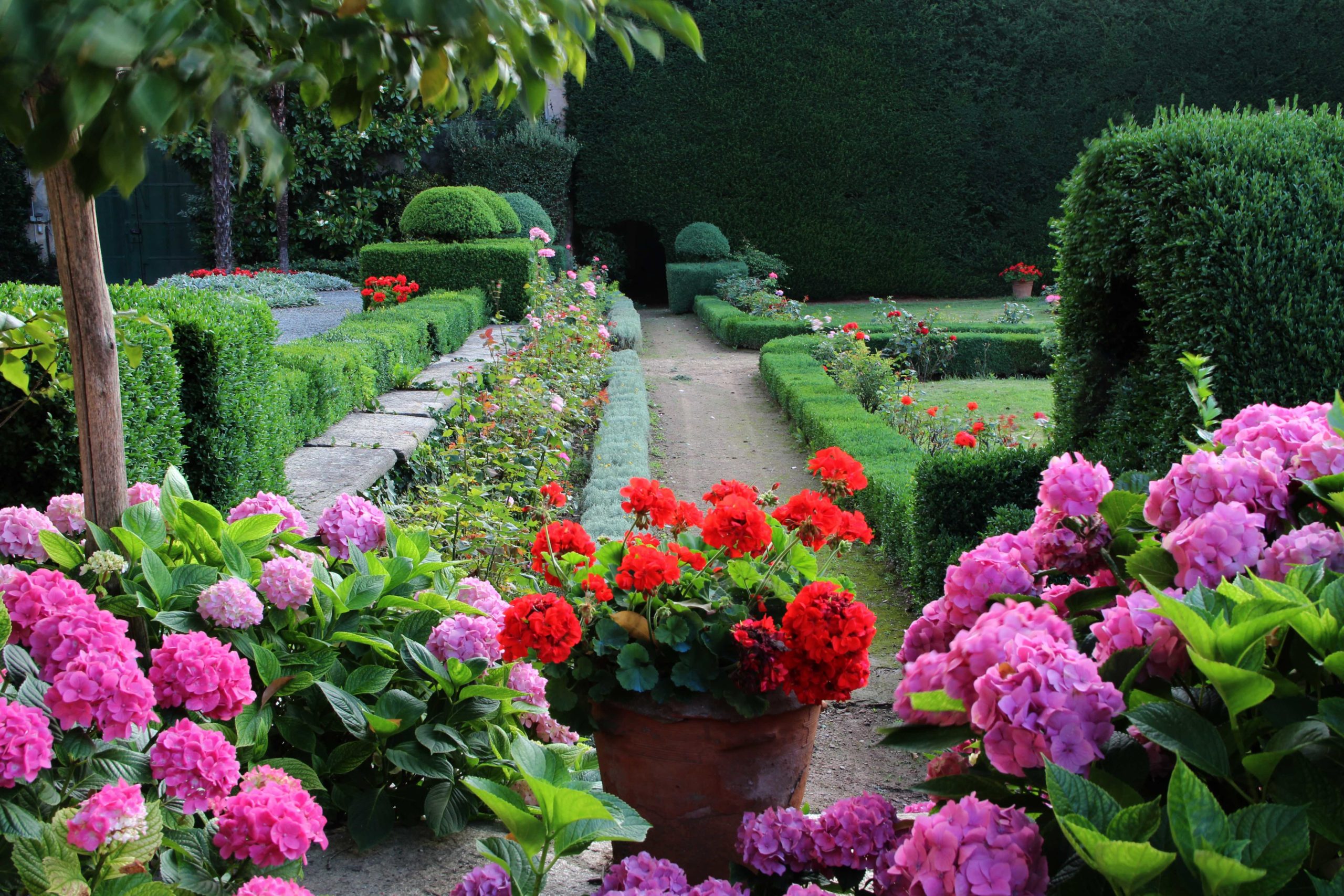
Casa Lajolo
This post is also available in:
 Italiano (Italian)
Italiano (Italian)
Casa Lajolo is in the medieval village of San Vito, at the foot of Mount San Giorgio, in Piossasco (province of Turin).
It’s a typical historic country residence which should have looked the same also in the middle 1700s, probably built by Count Aleramo di Chialamberto – as confirmed by both the external appearance and the late Baroque decorations of the ceilings. The portico, with an overhanging terrace at the north-eastern corner of the house, as well as the adjacent structure, were, instead, added in the second half of the XIX century by the Lajolos, respecting true stylistic coherence.
In recent times, the decorations on the walls of some rooms, that had been hidden by layers of paint in the past, have been eventually restored. In fact, the house suffered devastating damage due to the occupation of Italian troops during the First World War, of the German commands during the following conflict, as well as having temporarily housed a group of French nuns between the two wars.
More recently, conservative restoration and extraordinary maintenance interventions have been carried out in compliance with the constraints imposed by the Superintendency of Artistic and Environmental Heritage.
The garden
Hidden from the outside by high walls, the garden develops on three terraces which follow the natural slope of the land; it is surrounded by dry stone walls and joined by easy stone steps.
The first terrace, the closest to the house, hosts examples of palm trees (Trachycarpus fortunei), several potted citrus plants (Citrus spp.), and a large yew (Taxus baccata).
The second, lower than the previous one, features the regular and strict geometry of the boxwood parterre (Buxus sempervirens), topiary pruned and split into four quadrants with a well in the centre. To the East, the whole large parterre is bordered a yew hedge (Taxus baccata) with a small forest of yews, conifers and a single black walnut (Juglans nigra) behind. Here and there, various shrubs or small flowering trees sprout from the beautifully trimmed box hedges, including magnolias (Magnolia spp.), common lilacs (Syringa vulgaris), deciduous shrubs (Viburnum spp.), shrub peonies, and hydrangeas (Hydrangea spp.).
The third terrace, with more irregular shapes, houses the orchard which includes cherry trees (Prunus avium), peach trees (Prunus persica), pear trees (Pyrus communis), plum trees (Prunus domestica), figs (Ficus carica), vines (Vitis spp.), currants (Ribes rubrum), and raspberries (Rubus idaeus).
The plants were planted in a group of five arranged in a square with one in the middle (quinconce), interrupted only by perspectival walkways flanked by a silver border of Stachys byzantine.
Below the terraces, at a lower level of about 16 ft, there’s the vegetable garden, surrounded by a wall like a medieval hortus conclusus and housing a small fishpond, and some small ditches with a washbasin used for irrigation.
Over the last few years, this space has undergone a dramatic transformation thanks to the interventions of architect Monica Botta, who transformed it into a real vegetable garden with the geometries of an Italian garden. Cultivation techniques forbid “invasive” treatments and favour the synergy among the different plants, trying to restore ancient farming practices and thus making the garden a special, beautiful and virtuous place.
Today, the property is protected by “Casa Lajolo Foundation”, established in 2016, which pay particular attention to the territory and the actual use of the garden, vegetable garden and the surrounding crops.
The library
The library of Casa Lajolo is made of two different book repositories: the Chialamberto-Lajolo collection and the De Vecchi collection (a member of the family from Milan), for a total of some 1600 publications. The oldest books in the two collections respectively date back to 1610 and 1710. The De Vecchi collection also includes music publications: about 120 opera librettos from the early XIX century, some first editions and some programs of Teatro alla Scala opera house of the 1920s, some comedies in Milan dialect of the “Milanese Theater Repertoire” (from 1869 to 1875), and some other 150 booklets of the Lajolo family, recently found during restoration works.
WORTH KNOWING: the house and garden can be visited from March to October every last Sunday of the month or according to the official annual calendar of events; visits can be also booked in advance.
It is possible to use the garden or the interior spaces for private functions or photoshoots.
This post is also available in:
 Italiano (Italian)
Italiano (Italian)
Contatti
Via San Vito 24, 10045 - 10045 Piossasco(TO)
casalajolo@gmail.com
Altre info
La casa e il giardino sono visitabili da marzo a ottobre tutte le ultime domeniche del mese o secondo il calendario annuale specificato nella sezione “eventi” o, previo accordo, su prenotazione


